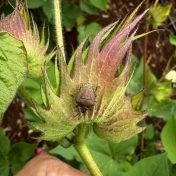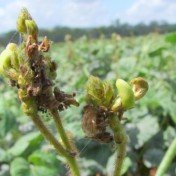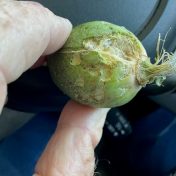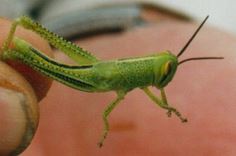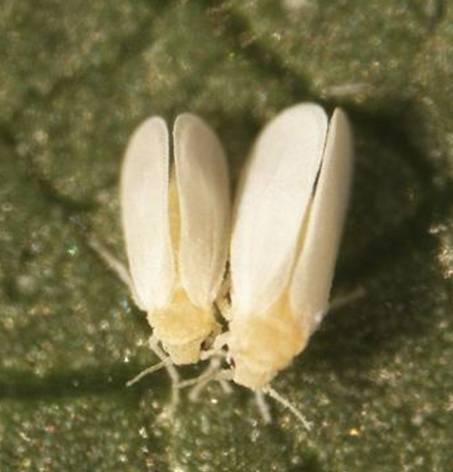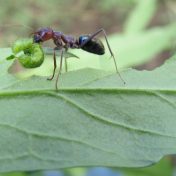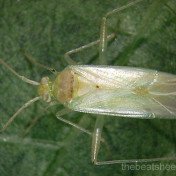It’s been more than 2 decades since we’ve had a major locust plague in Queensland, but recent seasonal conditions have created an ideal environment. Outbreaks of migratory locusts are currently occurring across quite a few shires in Central Western regions and into Northern Queensland. See the online map (updated daily) of current sightings and estimated densities. The Department of Primary… Read more »
There have been reports of sporadic moderate to high mouse activity from several Australian grain growing regions, including southern Queensland, where 3 sites had high activity (with up to 800 burrows/ha at one site). See the April GRDC/CSIRO Mouse Update for more information. High mice numbers when winter crops are planted can result in significant economic damage, and summer crops… Read more »
High numbers of brown shield bugs (BSB, Dictyotus caenosus) have been reported in cotton fields from Hay through to Texas on the Queensland/New South Wales border. In pulse crops, these bugs (also referred to as ‘stink’ bugs) are part of the podsucking pest complex, and can cause both yield reductions and impacts to seed quality. Adults are about 8mm long… Read more »
A new APVMA permit (PER 93132) allows the use of a spray drift management tool (SDMT) to re-calculate buffer zones to suit your particular situation when applying some pesticides. The SDMT (available as a spreadsheet file) and other relevant documentation (including a video on how to use the calculator) and a copy of PER93132 can be found on the APVMA… Read more »
There have been reports of mice activity in some crops around the Central Highlands, including grain sorghum, mungbean and cotton. Numbers of house mice (Mus domesticus) are generally low in cropping areas, but plagues can occur when conditions are favourable. Mouse populations have the potential to build rapidly and can do considerable damage in high numbers. Controlling plagues is both… Read more »
Most people check the outlook for storms, but have you checked the outlook for swarms recently? After the widespread plague locust activity in southern Queensland and northern NSW in late spring to early summer in 2020, and given the recent rain in some districts, you might be interested to know what the outlook is for locusts and grasshoppers in your… Read more »
The first major outbreak of silverleaf whitefly (SLW) in Australia occurred in 2001-02 in central Queensland. Although it hasn’t occurred again in such biblical proportions, SLW has spread across Australia and is still a pest to watch in many cotton crops, as the honeydew it secretes contaminates the lint. The original SLW threshold matrix developed in central Queensland recommended looking… Read more »
While ants are most often thought of as a nuisance in kitchens or at picnics, they can also be present in a wide range of crops and other farm areas. Although ant nests are usually built in undisturbed locations (in field crops ants are most commonly found on field margins), in some soils they can colonise cultivated areas quite quickly…. Read more »
The Beatsheet would like to wish all our readers and subscribers a very merry chrysalis for 2019! For those taking a break we hope you have a safe and happy holiday. The Beatsheet is brought to you with the support of DAF, GRDC and CRDC. If you have any comments or suggestions regarding this pest management information service, please let… Read more »
After the introduction of Bt cotton in the 1990s, the focus of cotton pest management has shifted to sucking pests. Green and brown mirid (Creontiades spp.) damage can occur at any stage, from seedling to boll filling, although crops are usually attacked before peak flowering. Feeding damage (including terminal death, abscission of young squares and bolls, and lint damage in… Read more »



